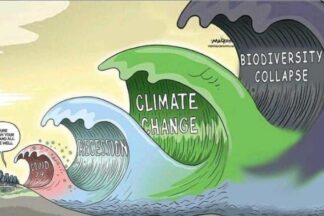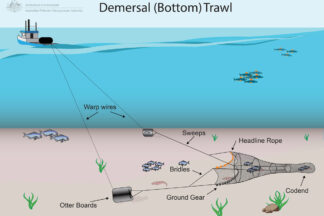After some results at the COP in Vancouver, as well as efforts by the TNFD (Task Force for nature-based financial disclosure) – we finally (!) got the first ever Science -Based Targets for Nature (SBTN).
It is a first release, however. So the question obviously is, how do these targets address the 5 key drivers of biodiversity erosion? Are the SBTNs worth their salt?
In the last post I wrote about one of the most historic inter-governmental landmark decisions: At the ‘Biodiversity’ COP (COP15) 200 countries had agreed on 4 Goals and 23 Targets.
It goes without saying though that the interesting piece is the enforcement and implementation mechanisms of the mentioned agreement.
Hence, the focus of this article is: How exactly – if at all – will the goals and progress measures reached in December 2022 be enforced and tracked?
In time for Christmas, one of the most historic inter-governmental landmark decisions hit the headlines: The 'Biodiversity' COP (COP15) had actually achieved 'something'. 200 countries had agreed on 4 Goals and 23 Targets. Some of those are a bit more concrete than others, the headline goes roughly like this: “By 2030: Protect 30% of Earth’s lands, oceans, coastal areas, inland waters; Reduce by $500 billion annual harmful government subsidies; Cut food waste in half.” A closer look at precisely those 23 Targets and the specificity of the measures they contain.
Over 100 million people rely on inshore subsistence and small-scale artisanal fishing for their daily food and livelihood. But it’s not them that we’ll talk about in this post – because they are the unfortunate ones at the end of the short stick in the global game of industrial subsides.
In this post we talk about the industrial fishing industry, the subsidies that go into it, the really sticky WTO negotiations to make away with them.
It's not all doom and gloom. There is hope - just that it comes from elsewhere than governments.
Measuring Biodiversity, in terms of baseline (status quo), progress, and deliverable targets, is not a simple thing. Collateral damages are a serious risk.At the same time though, some companies use outcomes of tools, which where never intended to deal at all with biodiversity, as proxy vehicles. This of course raises the question: Where are we with tools, programmes, and measurement systems for biodiversity? Hereafter a look across what I found to be having (some) teeth - also in comparison to the more popular climate change topic. These are: TNFD, SBTN, as well as two management tools that might be helpful, FFFBB and BIA.
Ask: If you are aware of others initatives 'with teeth' as of of writing (November 2021): do let me know and I’d be happy to list them also. Thank you!
Textile Exchange recently launched their (first ever) Biodiversity Insights Report. In itself not a bad idea per se – after all, assessing the staus quo of things is at least a baseline – the report is indeed ‘insightful’ in a number of ways. Most importantly: it raises a lot of questions. Such as:
If predominantly large companies are such laggards in all things biodiversity - can you imagine the situation in companies with much less resources? And why are entirely inadequate tools used to measure biodiversity? Are the commitments not just a rehash of climate committments, that only very recently start to show teeth and results?
In the last post I explained what COP15 is: A conference with the main purpose to adopt the post-2020 global biodiversity framework. But: What exactly is the framework agreement? What does it cover and encompass? Does it offer similar KPIs such as the SDG indicators? Are there enforcement mechanisms? Assuming for a moment, that it will be adopted: what would, or could, that tangibly mean going forward? Here a try at answering these questions.
While the relevance and criticality of COP26 is hammered home in the global media, the news reporting on COP15, as an effort possibly and reality more important than its Scottish climate conference peer, was rather subdued and unspectacular.
Let’s therefore get the most context-relevant questions straight out of the way: What is COP15? And why are there two COPs? And what has biodiversity to do with it?
Europe is, no doubt, a checker board in regards to environmental (and other) legislation and jurisprudence.
While the European Union is is hammering out the different fence poles related to its Green Deal and Green Taxonomies some other countries run ahead with their own locally applicable laws.
One law that is considered 'innovative' since its publication - the French 2019 Law on Energy and Climate, and its 2021 implementing decree - are worth a somewhat closer look. These pieces of law focus - once more - predominantly on financial industry players and reporting. The innovative part is the explicit inclusion of Biodiversity impact reporting. What are the bets of them beeing at the root of change?



